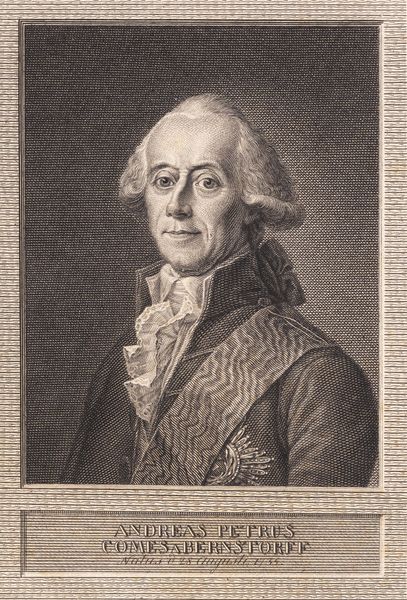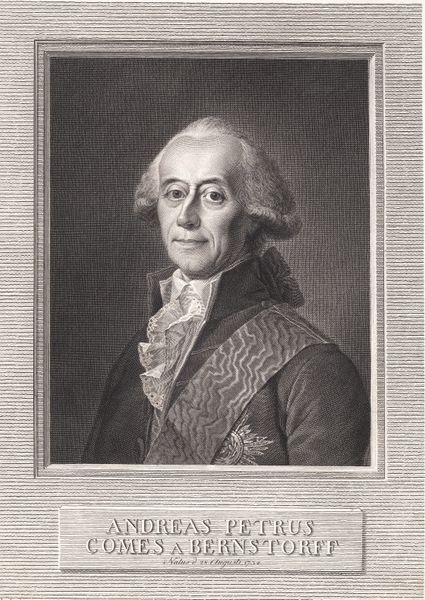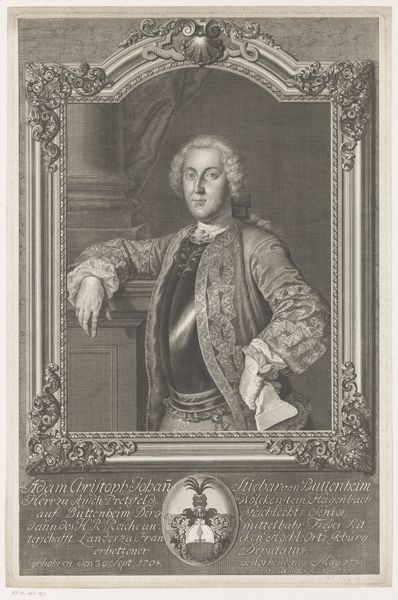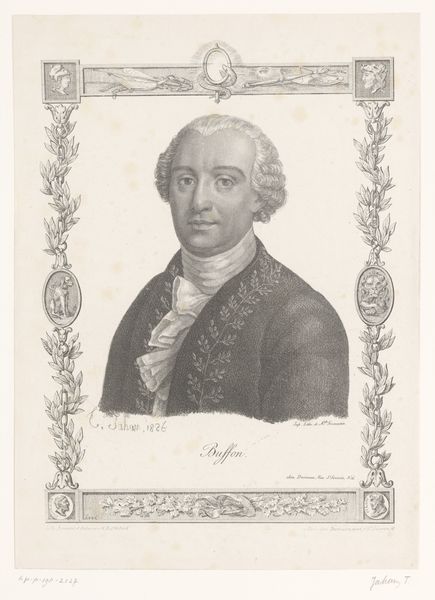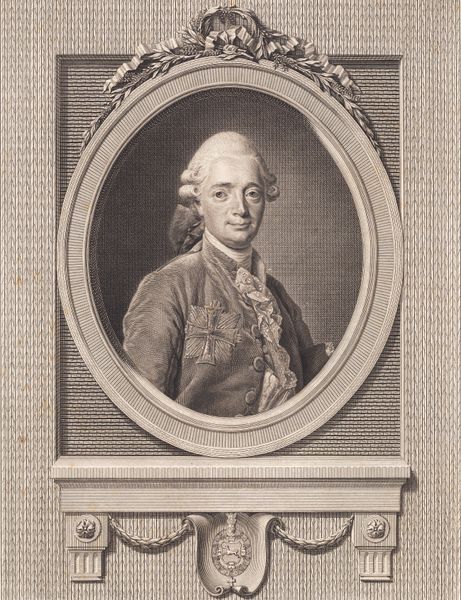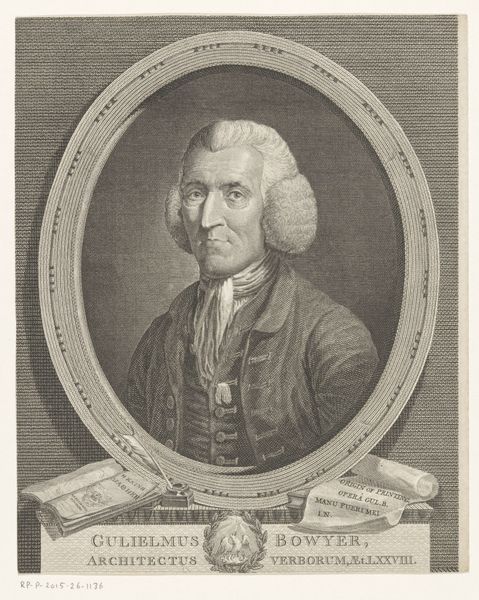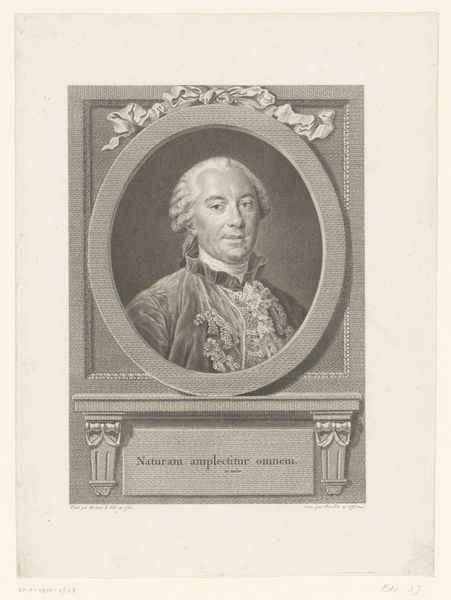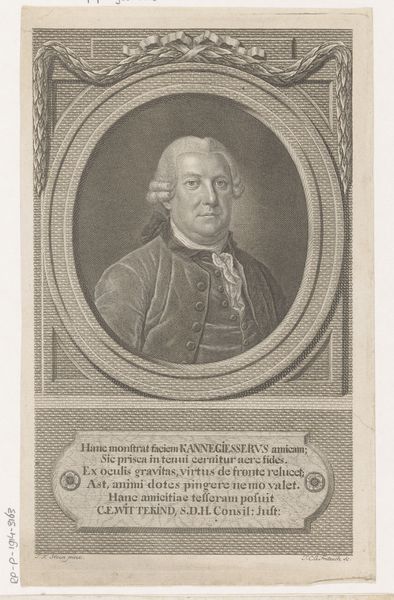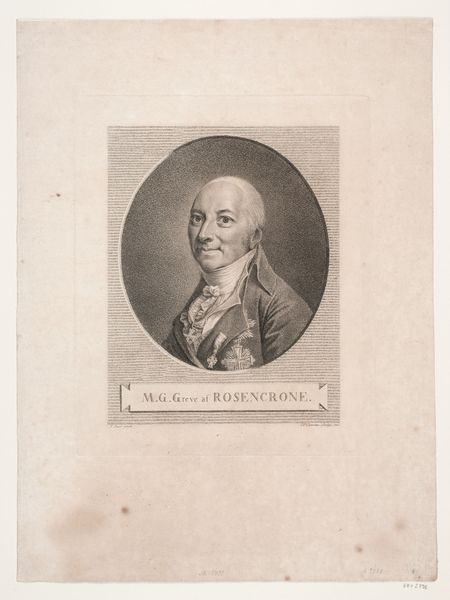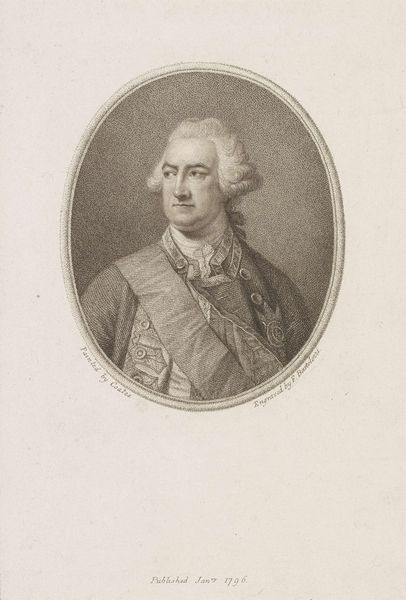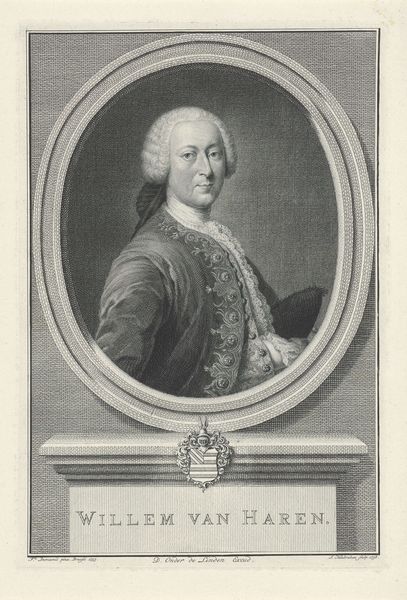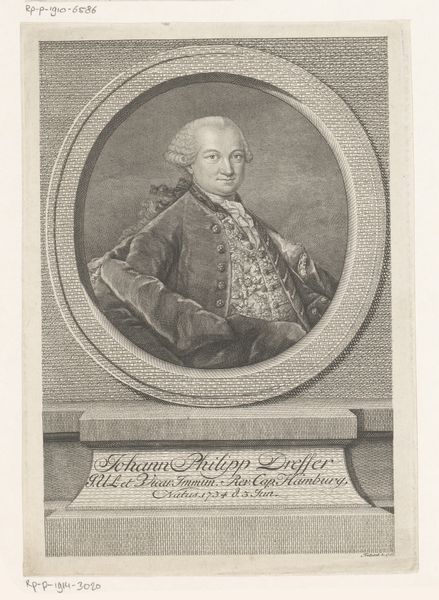
print, engraving
#
portrait
#
neoclacissism
# print
#
historical photography
#
history-painting
#
engraving
Dimensions: 354 mm (height) x 279 mm (width) (bladmaal), 305 mm (height) x 226 mm (width) (plademaal), 277 mm (height) x 193 mm (width) (billedmaal)
Curator: Before us we have J.G. Moltke, a print created by J.F. Clemens in 1816. It resides here at the SMK, the Statens Museum for Kunst. Editor: The composition feels quite rigid, but something about the textured background is rather soothing, almost meditative. It lends the portrait a slightly ethereal quality despite its formality. Curator: Clemens employed engraving, a printmaking technique that involves cutting a design into a metal plate. Consider the labor required to create these incredibly fine lines to render the texture and tone. Editor: Indeed. And in its Neoclassical style, this artwork positions Joachim Gottsche Moltke within a visual language of power, one very aware of the legacies of classical authority during a time of significant political shift across Europe. What did it mean to be a ruler then? Curator: Absolutely, this style harkens back to earlier methods of representation that supported the traditional forms of control exerted in states like the Danish kingdom, where materials like engraved copper and the distribution of printed portraits themselves reinforced such concepts through use and widespread reproduction. Editor: I see Moltke's image, surrounded by symbols of status, acting as an affirmation of social hierarchy at a moment of immense tension, hinting at concerns over lineage and privilege. Curator: Precisely. Each engraved line played a part, reproducing and thus amplifying a precise message about authority through material processes. Editor: A single engraving becomes part of a web: economics, politics, labor, the individual. All captured on paper. Curator: An excellent demonstration of how art objects work on multiple interwoven planes! I am constantly amazed at how a single piece can unlock an archive of intersecting stories and ideas. Editor: Every work of art contains worlds and histories within its borders if you choose to see it and let it tell it.
Comments
No comments
Be the first to comment and join the conversation on the ultimate creative platform.
